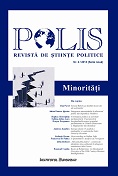O analiză a migrației Est-Vest după extinderile UE din 2004 și 2007: efecta asupra dezbaterii politicii de migrație
An Analysis of East-West Migration Following the 2004 and 2007 EU Enlargements: Effects on the Migration Policy Debate
Author(s): Rada Cristina IrimieSubject(s): Politics / Political Sciences
Published by: Editura Institutul European
Keywords: migration; policy; enlargement; European Union.
Summary/Abstract: Of special interest to EU migration policy are the effects of the EU enlargements of May 2004 and January 2007, with the addition of the EU-8 (Czech Republic, Estonia, Hungary, Poland, Slovenia, Slovakia, Lithuania, and Latvia) and EU-2 (Bulgaria and Romania) respectively. After the fall of Eastern communist regimes, massive East-West migrations were predicted and were expected to have a significant negative impact on the original EU-15. However, neither mass migration nor significant negative effects for receiving countries materialized, though many policies were implemented relating to these concerns. This paper seeks to analyze the effects of the expansions and accompanying policy changes on the long-standing trend of East-West migration. Policies implemented prior to and during the enlargements are examined, followed by an analysis of the likely impact of migration trends on both current and future EU migration policy, using comparative case studies of both sending and receiving countries. A review of the literature on trends and policies surrounding the enlargements suggests that economic concerns continue to play a role and have increasingly become the primary determinant driving migration patterns, though contributing factors such as asylum migration, ethnic return, and undocumented migration, as well as important topics in labor migration, such as the effects of the recent economic downturn and remittance flows will also be examined. Results from the analysis indicate that though EU migration policy continues to be more and more centralized, further integration is required, and should include standardized data gathering and reporting to facilitate informed policy decisions.
Journal: Polis. Journal of Political Science
- Issue Year: I/2013
- Issue No: 02
- Page Range: 170-189
- Page Count: 20

